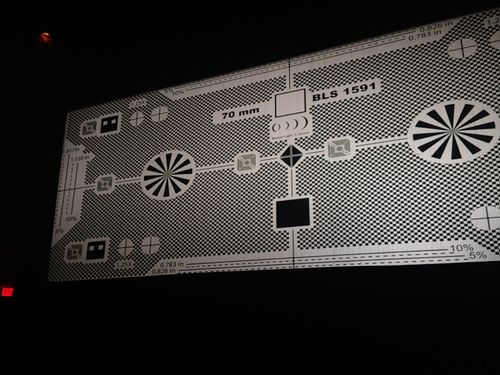| Welcome to Sprocket School! This project is maintained by volunteer editors. Learn more about how this works. |
Test film: Difference between revisions
Jump to navigation
Jump to search
No edit summary |
|||
| Line 14: | Line 14: | ||
* DOLBY CAT. NO. 69P - Pink Noise test film | * DOLBY CAT. NO. 69P - Pink Noise test film | ||
* CAT. NO. 69T- Dolby Tone test film | * CAT. NO. 69T- Dolby Tone test film | ||
==Images== | |||
'''click to enlarge''' | |||
<gallery widths=250px heights=250px mode=packed> | |||
File:70MM test.JPG|Boston Light and Sound 5/70 test film on screen | |||
File: 16mm_test_film.jpg| 16mm test film | |||
</gallery> | |||
==Sources of test film== | ==Sources of test film== | ||
Revision as of 13:35, 20 September 2016

Test films are tools for calibrating, aligning, and checking film projectors and their components. Issues that can be diagnosed and corrected with the guidance of test films include ghosting, focus, framing, and pedestal adjustments. They are sometimes used in conjunction with test equipment.
The term generally refers to films made by technical bodies like SMPTE or by manufacturers like Schneider Optics specifically for test purposes.
The term may also be used for any piece of footage used to test a projector, such as a fresh trailer used to conduct a scratch test.
Common types of test film
- SMPTE RP-40 - Visual focus test film for 35mm
- SMPTE RP-91 - Visual focus test film for 70mm
- SMPTE Buzz Track - Sound test film to set lateral position of film in the soundhead.
- DOLBY CAT. NO. 69P - Pink Noise test film
- CAT. NO. 69T- Dolby Tone test film
Images
click to enlarge
-
Boston Light and Sound 5/70 test film on screen
-
16mm test film
Sources of test film
Other Resources
External Links
- Tumblr page on test film history

